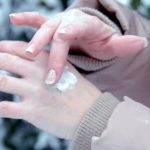As summer officially begins during this time of social distancing, people are spending more time on outdoor activities. Whether you’re walking a pet or taking a bike ride, you should take precautions to reduce health risks while enjoying nature’s bounty.
In addition to remaining six feet apart from those outside your household, keep these quick tips in mind:
Tick Safety
Pennsylvania residents face some of the highest risks for contracting Lyme disease. The best method to avoid ticks is to stay away from their primary habitats, including leaf litter, compost piles, stacked brush and heavy undergrowth areas. If this is not possible, consider using repellent-based clothing that adequately covers the skin and wearing light-colored clothing to make ticks more visible.
Use an insect repellent containing DEET, picaridin or lemon eucalyptus, and frequently brush off clothing while in high-risk areas, making sure to take a shower when finished. Also, be sure to inspect children and pets for ticks when returning indoors.
UV Protection
Always use sunscreen of SPF-30 or greater when outdoors. Sunscreen should be applied on dry skin at least 15 minutes prior to going outside. Remember to include ears and the tip of the nose. When swimming or boating, reapply sunscreen every few hours.
Use a hat to protect your head and face, or an umbrella as an additional UV barrier. Sunglasses with UV protective lenses and lip balm are also highly recommended.
Lightning Safety
Lightning is most prevalent in late spring through early fall, and death from lightning is the highest reported storm-related fatality. Ensure any organized outdoor sports or activities have an inclement weather plan in place. Within the plan, identify “safe shelter” areas to gather during inclement weather. The safest refuge is a fully enclosed structure with modern electricity and indoor plumbing. Vehicles are the next best option if an indoor retreat is not available. Open water, high points on hills, trees in open areas and bleachers should be avoided.
Any visible lightning should result in removal from any playing field. “Heat Lightning” (cloud to cloud lightning) is still a risk, and precautions should be taken at the first observation of lightning or sound of thunder. It’s safe to return after a 30-minute delay in activity from the last lightning strike.
ABOUT THE AUTHOR: William Ankrom, M.S., LAT, ATC is an instructor and clinical education coordinator in the Department of Sports Medicine and Nutrition for the Athletic Training Education Program at the University of Pittsburgh.









